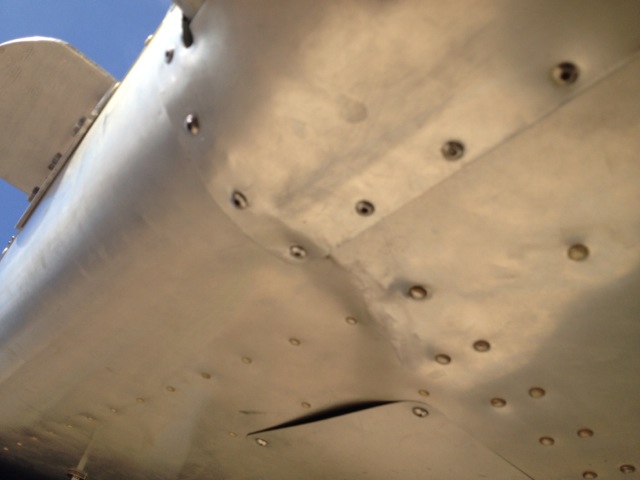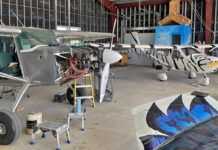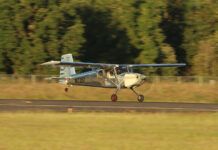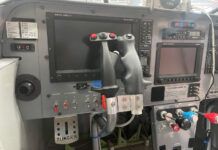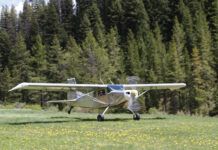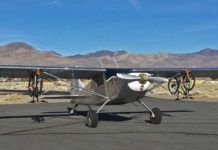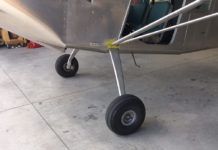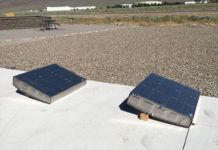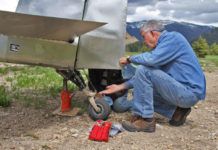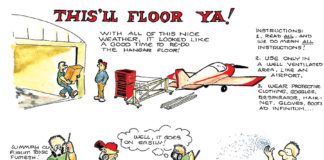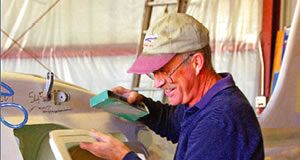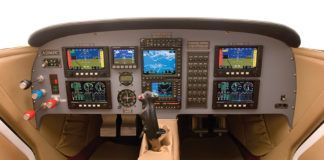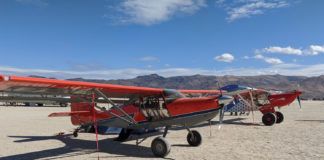Continuing the theme of flight testing–one of the hardest things for a builder/pilot to do, especially when their airplane is new and they are enjoying it–is to ground the machine due to a mechanical problem that isn’t understood. We all know that you can fix an oil leak by tightening something, correct a heavy wing via a number of methods, or trace out the wiring on a radio that isn’t working. But what do you do when you see a problem developing that seems to be design related and you don’t have an answer?
Such is the case for our Tundra right now. We signed it out of Phase 1 having completed the entire XP3 test package from the EAA and doing additional testing to get it past the 40 hour minimum. But now we are seeing a skin deformation between the firewall and the landing gear box – a subtle buckling that has measurably gotten worse. Consulting with other Tundra owners on the Internet forum, at least two others have seen the same thing – one fixed it with an external stiffener, and another used a skin doubler. But none of us know the cause, so none of us know if it is a big concern or simply an annoyance.
It is always easy to keep flying with a little problem when we don’t know the answer. Believe me when I say – this has bedeviled the aviation industry since the earliest days, and has caused some major catastrophes because the operators kept flying while trying to understand the problem. It is one thing to understand it and keep flying, knowing how the problem will progress. It is another to not understand and keep flying – because you don’t know if the next flight will be OK or if the part or structure will fail. If you don’t know what you don’t know – you have to stop and think about it.
I am pretty sure that we’ll clear the Tundra with a little extra help from the factory, and – looking at the plans – it appears that the actual load paths from the engine to the airframe are elsewhere. But….if the suspect skin isn’t carrying any loads, why is it buckling?
Like the old saying goes, it is far better to be on the ground, wishing you were in the sky than to be in the air, wishing you were on the ground. So here we are on the ground, wishing we were in the air – but happy to be working to resolve the issue with both feet firmly planted in the workshop. That is – when we’re not flying other airplanes…

